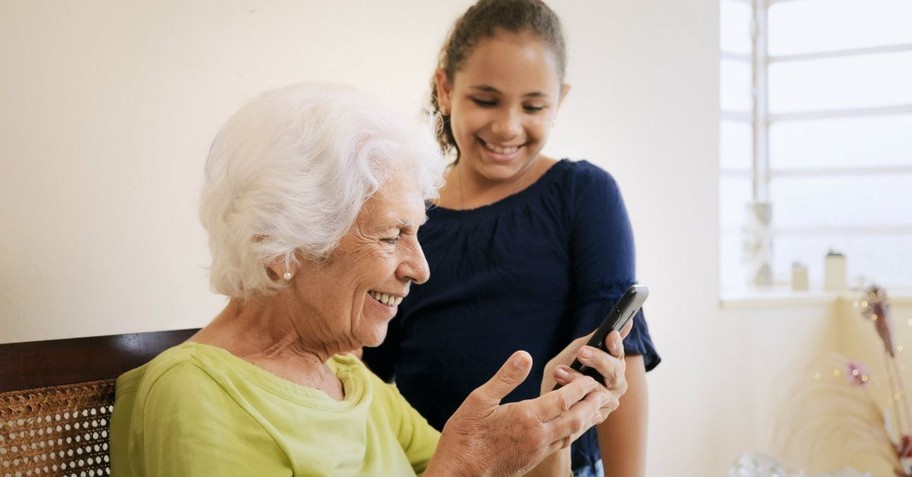10 Creative Community Service Projects for Your Youth Group

When my youth minister husband sat down to design a summer mission week for the teens in our church, he knew one thing – it wouldn’t be the typical youth group experience. Instead of going away (there’s nothing wrong with going away), we’d stay local – in the community we were trying to reach. Instead of being heavy on fun (there’s nothing wrong with fun), he wanted the kids to experience the joy of serving others. Instead of tacking on token Bible lessons like commercials during the Super Bowl (there is something wrong with that), he wanted scriptural principles to be the main event.
He called our week-long, stay-in-town mission trip Destination J.O.Y., which stands for Jesus, Others, and You. Built on the pillars that characterized his ministry: biblical teaching, service, outreach, and wholesome fellowship, Destination J.O.Y. was the highlight of the year. Best of all, it became one of the most life-changing events of our students’ lives.
The Jesus component is obvious – relevant, meaty, age-appropriate messages the students could understand and apply. The You component included fun activities like a day at an amusement park, a water park, and a putt-putt/arcade. The Others component involved carefully-chosen service projects to push our students out of their comfort zones and into our community where they could love and serve others.
We organized several Destination J.O.Y. mission weeks during my husband’s years as a youth minister. Here are 10 of our favorite creative community service projects:
Photo courtesy: ©Thinkstock/mangostock

1. Sponsor a Peanut Butter and Pizza Night for the homeless.
Every Wednesday night our students enjoyed hot, fresh pizza at youth group. At the same time, members of several local churches were feeding the homeless a potluck meal in a city park. To raise our teens’ awareness and teach them what it feels like to sacrifice for others, we brainstormed Peanut Butter and Pizza Night.
We knew if we asked the students to contribute money or food toward the feeding, it would likely come from their parents, not them. So we took a different approach. On the night of the feeding, we ordered pizza as usual and stacked it on the table in the youth room.
When the time came to eat, however, we announced that we’d be eating peanut butter and jelly sandwiches and giving the pizza to the homeless. The students eagerly added their pizza to the potluck meal in the park and grinned to see how excited some were to discover pizza on the menu. We knew the lesson had hit home when the students voted to make Peanut Butter and Pizza Night for the Homeless a monthly event.
Photo courtesy: ©Thinkstock/dkhoriaty

2. Manicures for the homeless.
During our visit to the park, the students saw a volunteer giving haircuts to some of the homeless men. “Did you notice what a difference a simple haircut made?” one student asked. “That man was kinda slouchy and wouldn’t make eye contact, but after his haircut, he stood up straight and looked people in the eye.”
Mostly men attended the feeding in the park, but there was also a small group of women. “Why don’t we give them manicures?” one teen proposed. “It would show them we care. And make them feel special – and pretty.” So that’s what we did.
We washed their hands with scented soap, massaged them with shea butter lotion, then filed their nails. Two coats of the polish of their choice completed their pampering session. As the women moved from one station to the next, we made small talk. Most were hesitant to say much at first, but by the time they’d made it the length of the table, they were laughing and smiling. So were our students. “That’s the funnest thing I’ve ever done!” one teen said with a grin.
Photo courtesy: ©Thinkstock/Belyjmishka

3. Volunteer at a local school.
Every neighborhood has a public school, and ours had two within walking distance of our church. One summer we contacted the principal of one of the schools to ask if we could help in some way. He jumped at the offer. We did everything from clean classrooms, help teachers move their supplies from one room to another, scrub cafeteria tables, and haul away bags of trash. Our kids worked hard, beginning a partnership with the school that continues to this day.
Photo courtesy: ©Thinkstock/dolgachov

4. Fill baby bottles for a crisis pregnancy center.
Our local crisis pregnancy center distributed plastic baby bottles for a fundraising campaign. We sent each student home with a bottle and challenged them to fill it up with change and bring it back the next week. We encouraged them to tell others about the ministry and invite them to contribute. This way they not only raised money for the center, but helped spread the word about the ministry.
Photo courtesy: ©Thinkstock/ffolas

5. Hold a free car wash for church members.
Youth groups often use a car wash to raise money for a mission trip or project, but how often do they hold one simply to bless the members of their church or community? This is what we did one Wednesday night as people arrived for midweek service.
When a church member drove into the parking lot, we directed them to one of three carwash stations. In less than five minutes, their cars were sparkling clean and their faces were smiling. “It’s our way of saying thanks for all you do for us as a youth ministry,” we told each person who came through our line. The hardest part of this service project was convincing people NOT to give us money.
Photo courtesy: ©Thinkstock/spukkato

6. Hold a workday at a disabled person's home.
Because many of our teens didn’t know anyone with a disability, we wanted to give them a chance to interact with and serve them in some way. We asked Linda and John, a couple in our church who were confined to wheelchairs, if they’d be willing to help us. They loved the idea of a workday to assist them with tasks around the house.
Linda provided a list of chores our teens could easily do with supervision, things like bathe and brush their service dogs, change light bulbs, put up Christmas decorations, and do yard work. As the teens worked with the couple, their awkwardness changed to curiosity, and then to amazement. They learned that disabled people are no different than anyone else – resourceful, intelligent, creative, and fun. They gained an appreciation for the challenges disabled people face, learned how to offer help without offending, and experienced the satisfaction of investing their time and energy to make someone else’s life a little easier.
Photo courtesy: ©Thinkstock/vadimguzhva

7. Buy a goat.
Or a cow, or chicks. Every year Samaritan’s Purse publishes a Gift Catalog filled with ways to help struggling people in war-torn or disaster-affected areas at Christmastime. Six dollars provides a child with a warm blanket. Seven dollars buys hot meals for a week. Ten will give an orphan child a cuddly musical lamb that plays “Jesus Loves Me.”
Our students wanted to raise money for a gift that would help a family for the long term. Fourteen dollars will buy live chicks to raise for food and income, but they set their eyes on a bigger purchase – a milk goat. They learned that milk from a goat or cow is an excellent source of calcium, vitamins, and protein for growing children. Just one nanny goat can produce over two gallons of nutritious milk each week. Any leftover milk and cheese can be sold at a local market to supplement the family income.
We challenged them not to ask their parents for money, but to look for ways to earn the money. Within three weeks, by doing odd jobs, saving their spending money, and babysitting, the students had raised the $70 they needed. “This is the best Christmas present I’ve ever bought,” one student said happily.
Photo courtesy: ©Thinkstock/Mariemlulu

8. Partner with the elderly to teach technology.
Some senior citizens are tech savvy, but many aren’t. They struggle with the features on their iPhone, have difficulty navigating the internet, and would love to connect with friends and family on social media but don’t know how to set up accounts.
Teens, however, are technology geniuses. Why not sponsor a Senior Technology Day to pair the two? Announce the event several weeks in advance at your church or partner with a local senior center to offer one-on-one tutorials on Facebook, Instagram, smartphone, and computer basics. Working together helps promote mutual understanding, imparts valuable skills, and builds intergenerational relationships and self-esteem.
Photo courtesy: ©Thinkstock/diego_cervo

9. Adopt a fire station.
Every community has a fire station filled with men and women who risk their lives every day on our behalf. Adopting a fire station is a simple way to raise awareness and build friendships with local firefighters. Once a month or once a quarter, we’d gather our teens together to prepare and deliver a meal to the station. (Sub sandwiches, lasagna, and spaghetti are easy dishes.)
Many stations will allow the students to eat with the firefighters, and some will even give them a tour. Encourage students to ask the firefighters questions about their work. Most are eager to share stories of the drama and drudgery associated with their profession. Before you leave, ask if you can pray over the station and the firefighters and thank them for their service. Remind the students to pray for police and firefighters every time they hear a siren.
Photo courtesy: ©Thinkstock/ibsky

10. Hold a thank you dessert and show.
Sadly, many church members view their youth ministry as a part of the church that costs money, makes messes, and gives little back. We wanted to change this perception, so we planned a free church-wide event we called Dessert and a Show.
The teens decorated our fellowship hall to look like a classy dinner theatre and teamed up to provide an evening of entertainment. Their parents provided homemade or store-bought desserts and beverages that the youth (dressed neatly in black shirts and pants) served to their “patrons.” Other students performed comedy skits, musical pieces, and entertaining monologues. “We wanted to express our appreciation to you, our church family, for supporting our youth ministry and helping us grow in faith,” my husband said as he welcomed everyone to the event. The teens loved putting on the evening and giving back to our church family. Church members talked about it for months afterward.
Sadly, today’s youth have a reputation for being lazy and self-centered – and sometimes they are. By channeling their time, energy, and thoughts toward others, however, we can help them become more aware of those around them. Through creative community service, we can encourage them to make a positive impact on the world. As they serve others, their self-confidence, self-esteem, and self-worth rises. Best of all, they get to be the hands and feet of Jesus to the people around them.
Lori Hatcher is a blogger, women’s ministry speaker, and author of the Christian Small Publisher’s 2016 Book of the Year, Hungry for God … Starving for Time, Five-Minute Devotions for Busy Women.A Toastmasters International contest-winning speaker, Lori’s goal is to help busy women connect with God in the craziness of everyday life. She especially loves small children, soft animals, and chocolate. You’ll find her pondering the marvelous and the mundane on her blog, Hungry for God. . . Starving for Time. Connect with her on Facebook, Twitter(@lorihatcher2) or Pinterest(Hungry for God).
Photo courtesy: ©Thinkstock/michaelpuche
Originally published November 07, 2018.








